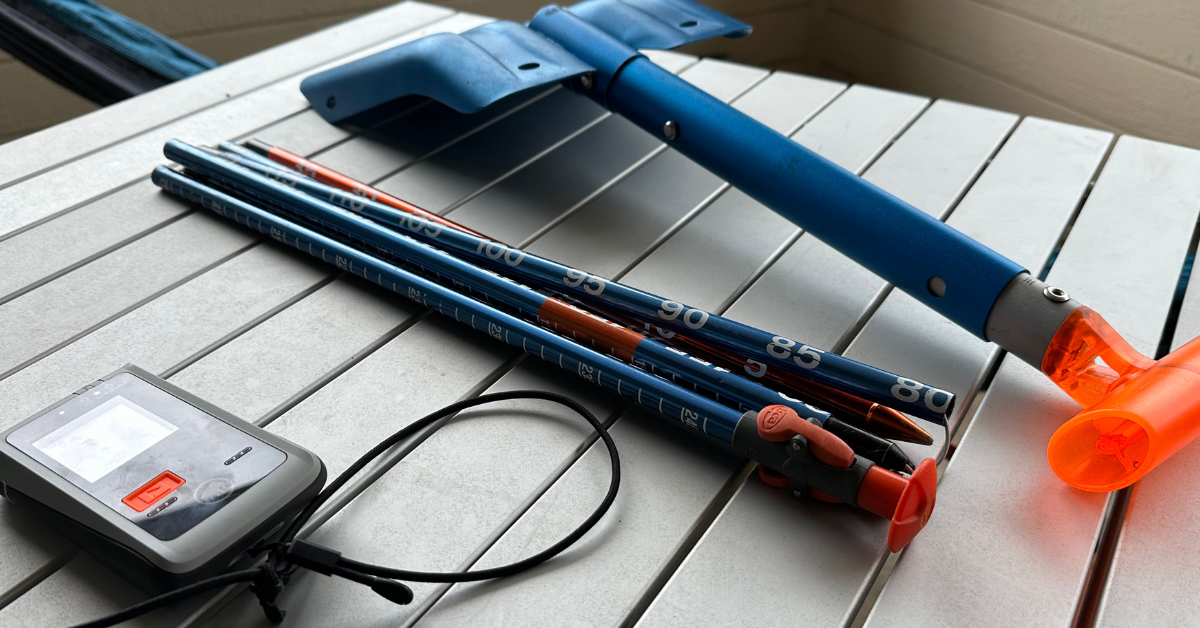
Spring is finally here and many of us have begun the transition to climbing with the warmer temps. As the snow melts and summer climbing opportunities call, it’s easy to forget about our winter gear.
Proper off-season storage of your avalanche rescue gear (beacons, shovels, probes, airbags, etc.) not only prolong the life of your gear, but ensures it functions when your life, or your partners life, depends on it.
This guide will walk you through the best practices for storing avalanche safety equipment over the summer. Keep reading to learn how to avoid common issues such as rust and corrosion, battery leakage, and other common off-season issues. Responsible gear care and storage is part of responsible mountain travel.
Avalanche safety gear is life-saving equipment. Like any critical tool, it demands regular maintenance and careful storage. Improper storage can lead to:
Taking time to store gear correctly reduces risk and can save you costly repairs—or worse, catastrophic failure in the field.
a. Remove the Batteries
One of the most important rules of summer storage: take the batteries out of your transceiver. Batteries left in over months of non-use can corrode and leak, damaging internal electronics.
b. Store in a Dry, Cool Location
Avoid attics, garages, or damp basements. High humidity and temperature fluctuations can damage circuits. Instead:
c. Avoid Magnetic Fields and Interference
Don’t store your beacon near strong magnets, electronics, or wireless routers. Long-term exposure to magnetic fields could potentially affect calibration or sensor function.
d. Check Firmware Updates Before Storage (Optional)
If your transceiver has updatable firmware, now’s a great time to check the manufacturer’s site and update the device, so it’s ready in the fall.
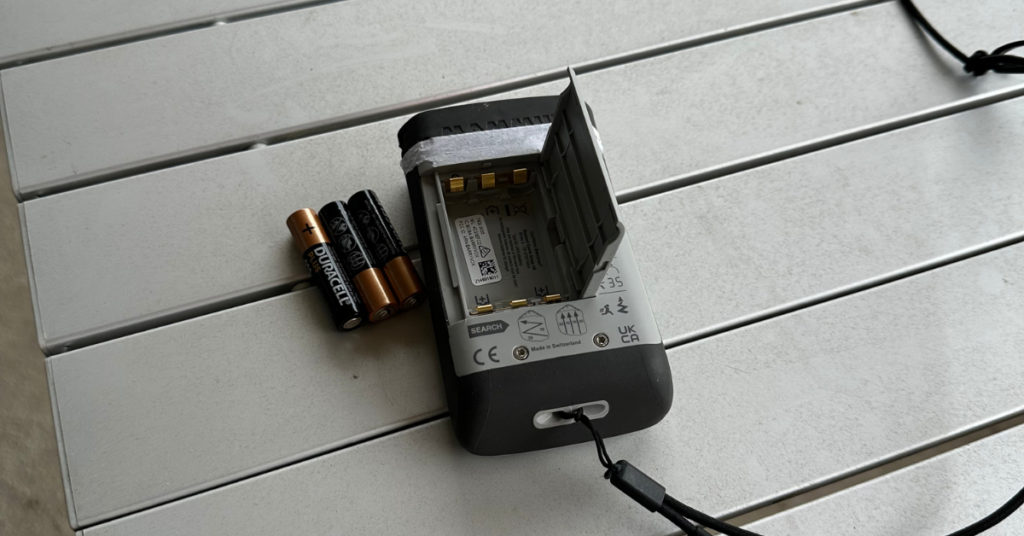
a. Clean Thoroughly
b. Dry Completely
Make sure your probe is 100% dry before storage. Any moisture trapped in the locking system or tubing can cause corrosion.
c. Store Loosely Coiled
Do not leave your probe locked or tightly coiled. Instead:
d. Inspect for Damage
Check the cable or cord inside for fraying, especially on older models. Test the locking system to ensure smooth deployment. If you see any dents or deformities, consider replacing it.
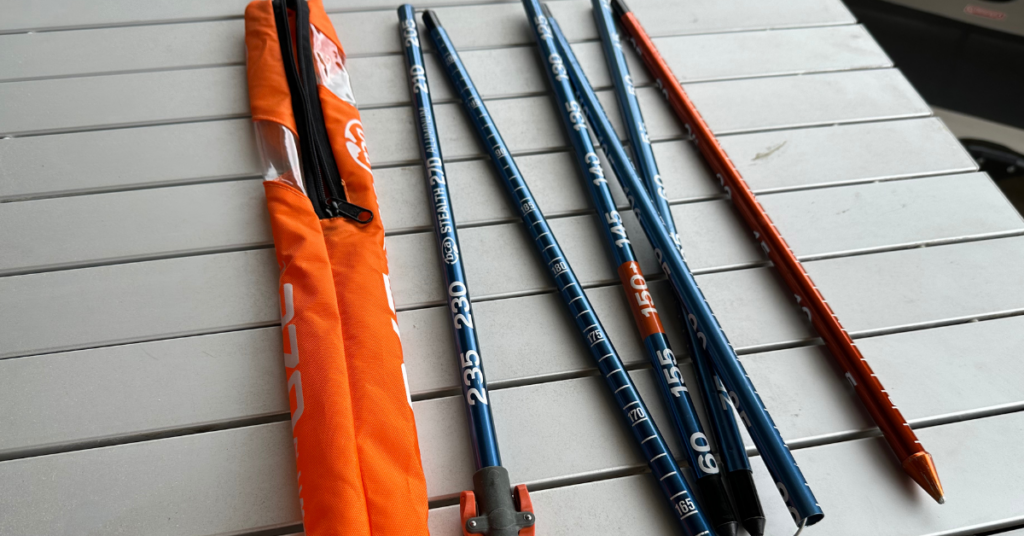
a. Clean and Dry
b. Disassemble
If your shovel breaks down into multiple parts, take it apart. This prevents components from binding and keeps the locking mechanism from seizing.
c. Store in a Dry Place
Just like the probe, store your shovel in a climate-controlled room. Avoid damp environments where metal can rust.
d. Inspect for Cracks or Warping
Check both the blade and handle. If the locking mechanism is loose or unreliable, repair or replace it.
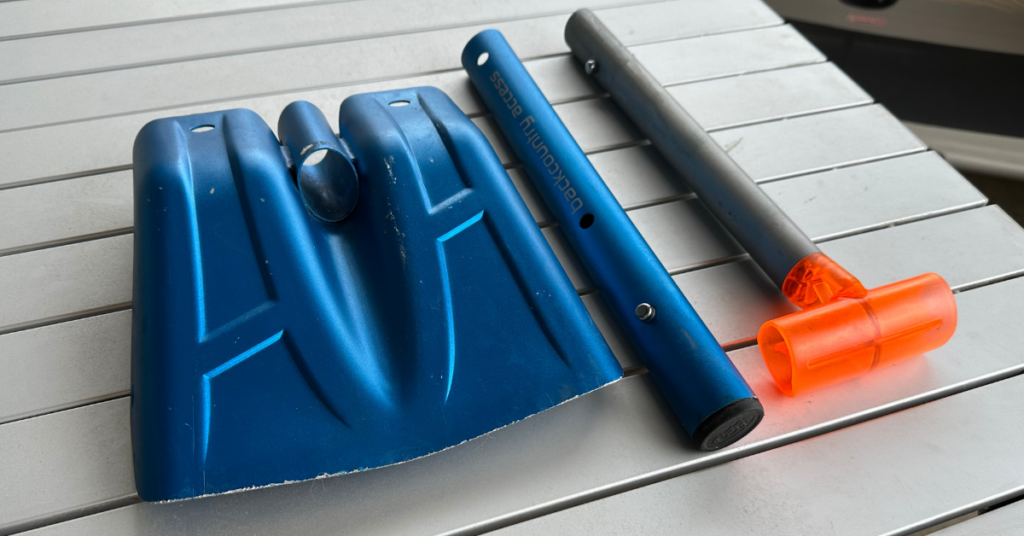
Airbag systems—whether electric (like the Alpride E1 or JetForce) or gas-canister powered—require special care due to their complexity and critical role.
It’s not just technical gear that needs care. Your avalanche gear setup includes essentials like gloves, goggles, helmet, first-aid kit, and more.
Here’s a handy end-of-season checklist:
✅ Remove batteries from beacon
✅ Clean and dry beacon, store in pouch
✅ Clean and dry probe
✅ Disassemble and store probe loosely
✅ Inspect probe for damage
✅ Clean and dry shovel
✅ Disassemble and store shovel
✅ Remove airbag canister or power down battery
✅ Charge battery to full before storage (for electric systems)
✅ Clean airbag pack, inspect components
✅ Check zippers, buckles, and airbag condition
✅ Store gear in cool, dry, dark place
✅ Update firmware (transceiver, airbag if applicable)
✅ Restock first-aid and repair kits
✅ Launder clothing and inspect for wear
Use your summer storage time to evaluate whether any gear needs replacing. Here are a few guidelines:
Take photos of your gear, record serial numbers, and store them digitally. This is helpful for:
You can also create a gear inventory spreadsheet with last service dates, firmware version, and notes for the next season.
Proper summer storage of your avalanche gear isn’t just about extending its life—it’s about making sure your equipment is ready to perform when the mountains demand it. A few hours of maintenance and thoughtful storage now can save your life months down the road.
When the snow begins to fall again, you’ll thank yourself for having clean, reliable gear that’s ready to go. Store it smart, and you’ll hit the skintrack with confidence next winter.
Stay safe—and enjoy the summer.



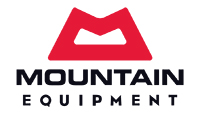
Content Copyright © 2025 of Golden Mountain Guides. All rights reserved. | Privacy Policy | Site Map